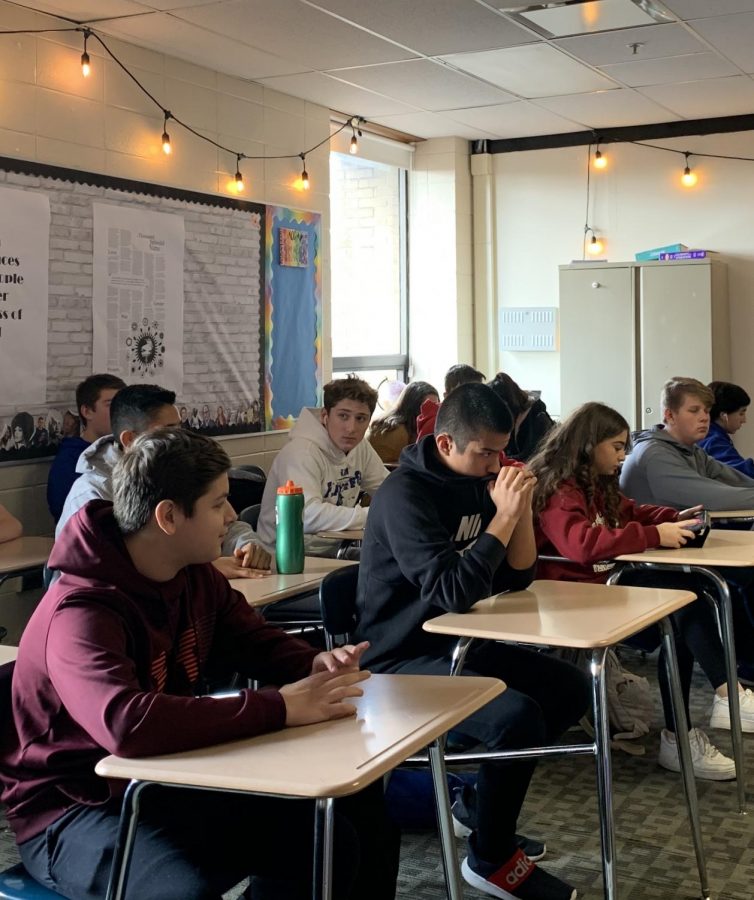More than just a mood
Seasonal Affective Disorder and the effect of lighting
Photo by Ruby Lueras
Jordan Addison surrounds his students with calming lighting. By making his classroom as comfortable as possible his students moods are improved.
As the days get shorter and the cold winter season approaches, it is easy to feel a dip in mood.
For some, this shift in mood could be attributed to a simple case of the “Winter Blues.” For others, the change may contribute to something more serious, like Seasonal Affective Disorder, or SAD. But what is the science behind the attitude drop, and how do some teachers at LZ deal with it?
Science behind the blues:
No matter what the effect, the winter months have a direct correlation with one’s well being. According to Tim Dowling, school psychologist, the lack of sunlight during the cold months is one cause that has the potential to negatively affect students.
“Sunlight affects our brains in a significant way. It triggers the chemicals in our bodies: serotonin and melatonin. The serotonin is what’s there to help keep us awake and reductions in the chemical can lead to more depressed feelings. Serotonin levels have a tendency to go down when you’re not exposed to those sunny days,” Dowling said. “Melatonin [on the other hand] increases at nighttime to help us go to sleep, it might increase more when you’re not exposed to sunlight.”
These changes may cause some may just feel down from time to time, while others may be impacted with Seasonal Affective Disorder, a subcategory of depression.
“These things happen to everybody, but for some people, the impact is so much greater. There’s that difference between just kind of feeling a little bit less productive and then there’s not being able to function as you may have normally been able to,” Dowling said. “In each case, it is generally understood that the lack of sunlight plays a key part in it.”
The effect of calming classrooms:
For some, the effects of not being able to get enough sunlight due to shortened days are amplified due to the environments at school, like harsh fluorescent lighting and barren classrooms. One English teacher, Jordan Addison, sets out to make his classroom as inviting as possible in order to improve the mentality of his students.
“Having a nice, warm, welcoming environment to learn eases a lot of anxieties that students might have, especially because I teach freshmen who have never been to high school [before], I think a nice and calm classroom definitely benefits students,” Addison said.
Being able to improve students’ mentality is very important to Addison. To him, being able to make kids feel comfortable is his one goal.
“Making a room more homey is better than these harsh lights that just kind of wash everything out and it gives some students headaches,” Addison said. “So just having some nice lighting and some plants makes it feel a little, a little less like school is a prison and more like school is a place to be and to belong.”

As a senior, this will be Ruby's third year on staff and first year as LZ Life Editor. When Ruby is not in the journalism room you can find her running...

